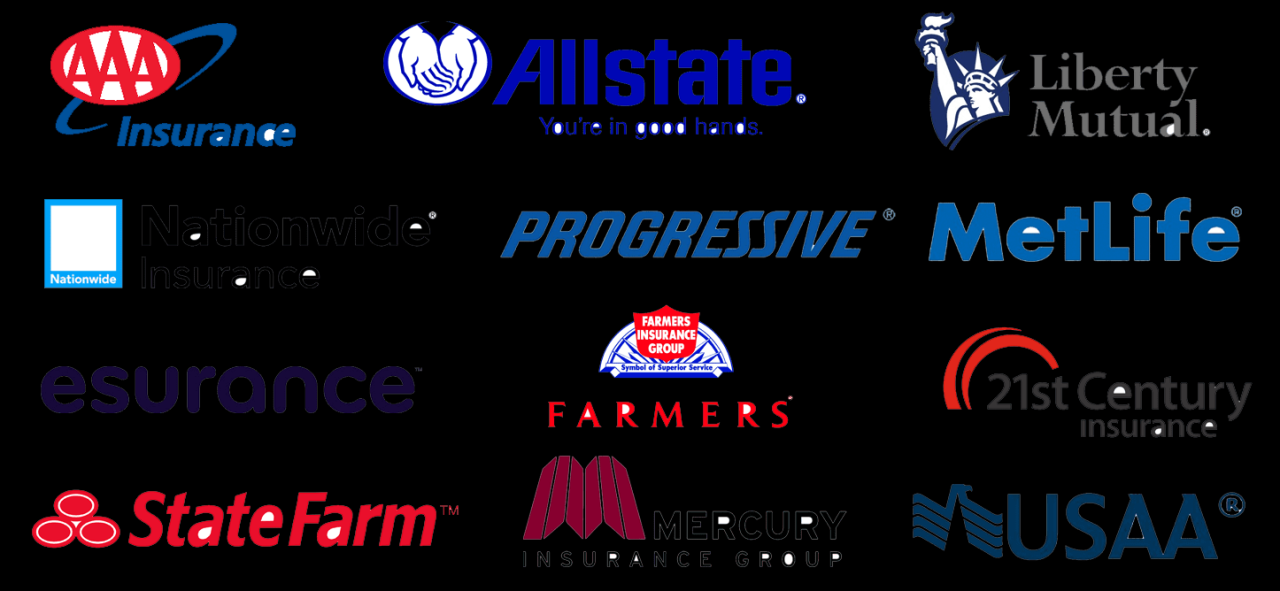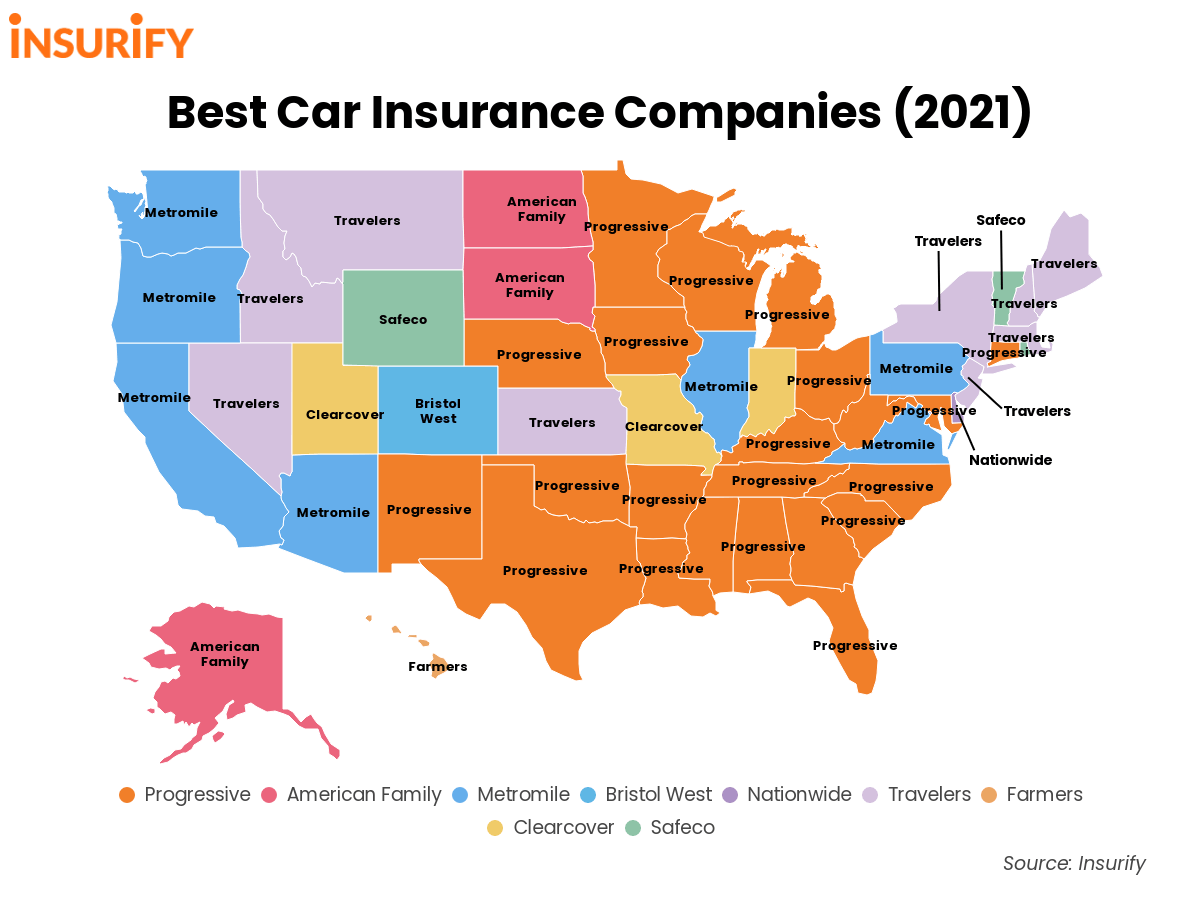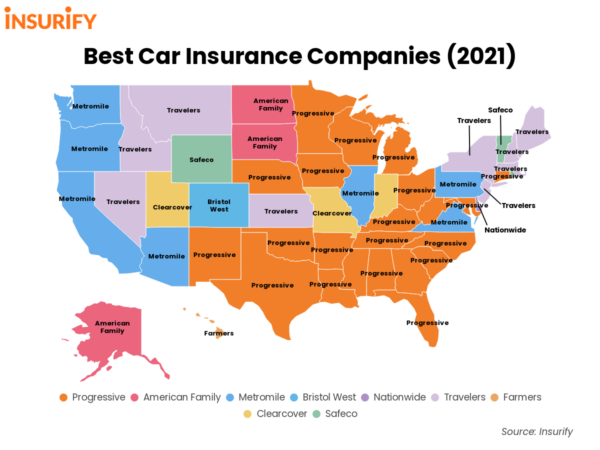
Finding the best car insurance providers can be a daunting task, especially with so many options available. Navigating the world of insurance premiums, coverage types, and deductibles requires careful consideration and research. But don’t worry, this guide will equip you with the knowledge and tools to make an informed decision that fits your needs and budget.
From understanding your individual car insurance needs to evaluating different providers and their offerings, we’ll cover all the essential aspects of finding the right insurance solution. We’ll explore key features to consider, discuss how to obtain quotes and compare options, and provide tips for managing your insurance policy effectively.
Understanding Car Insurance Needs
Finding the best car insurance policy is crucial, as it protects you financially in case of accidents or other unforeseen events. To make an informed decision, it’s essential to understand the factors influencing your insurance costs and the various coverage options available.
Factors Influencing Car Insurance Costs
Understanding the factors that affect your car insurance premiums helps you make informed decisions to potentially lower your costs. Here are some key factors:
- Your driving history: A clean driving record with no accidents or violations will generally result in lower premiums. Conversely, a history of accidents or traffic violations can significantly increase your rates.
- Your age and gender: Younger drivers, particularly those under 25, are statistically more likely to be involved in accidents. Similarly, gender can also play a role in pricing, as historical data shows certain gender groups have higher accident rates.
- Your location: Car insurance premiums vary depending on where you live. Areas with higher traffic density or a greater number of accidents tend to have higher insurance rates.
- Your vehicle: The type of car you drive significantly influences your insurance costs. High-performance cars or expensive vehicles often have higher premiums due to their greater repair costs and potential for higher claim payouts.
- Your credit score: In many states, insurance companies use your credit score as a factor in determining your premiums. A good credit score generally translates to lower rates, while a poor credit score can lead to higher premiums.
Types of Car Insurance Coverage
Car insurance policies typically offer various coverage options, each designed to protect you in different situations. Understanding the different types of coverage is crucial to choosing a policy that meets your specific needs.
- Liability coverage: This is the most basic type of car insurance and is usually required by law. Liability coverage protects you financially if you cause an accident that results in injuries or damage to other people or property.
- Collision coverage: Collision coverage pays for repairs or replacement of your vehicle if it’s damaged in an accident, regardless of who is at fault.
- Comprehensive coverage: Comprehensive coverage protects your vehicle from damage caused by events other than collisions, such as theft, vandalism, natural disasters, or falling objects.
- Uninsured/underinsured motorist coverage: This coverage protects you if you’re involved in an accident with a driver who doesn’t have insurance or has insufficient coverage.
- Personal injury protection (PIP): PIP coverage helps pay for medical expenses, lost wages, and other expenses if you’re injured in an accident, regardless of who is at fault.
Common Car Insurance Add-ons, Best car insurance providers
Car insurance companies offer various add-ons that can enhance your coverage and provide additional protection. These add-ons often come at an extra cost, but they can be beneficial in certain situations.
- Rental car reimbursement: This add-on covers the cost of renting a car while your vehicle is being repaired after an accident.
- Roadside assistance: Roadside assistance provides help in situations like flat tires, dead batteries, or lockouts.
- Gap insurance: Gap insurance covers the difference between the actual cash value of your vehicle and the amount you owe on your loan or lease if your vehicle is totaled in an accident.
- Custom parts and equipment coverage: This add-on provides coverage for aftermarket parts or modifications that aren’t included in your standard insurance policy.
Evaluating Car Insurance Providers
Once you’ve determined your car insurance needs, it’s time to start evaluating providers. This involves comparing different companies based on factors that are important to you, such as price, coverage, customer service, and financial stability.
Financial Stability and Claims Handling Experience
A company’s financial stability is crucial. A financially sound insurer is more likely to be able to pay out claims when you need them. You can research a company’s financial strength by checking its ratings from organizations like A.M. Best, Moody’s, and Standard & Poor’s.
A company’s claims handling experience is also essential. You want to choose an insurer with a reputation for processing claims quickly and fairly. Look for companies that have a high customer satisfaction rating for claims handling. You can find this information on websites like J.D. Power, Consumer Reports, and the National Association of Insurance Commissioners (NAIC).
Customer Service Ratings and Reviews
Customer service is a significant factor when choosing a car insurance provider. You want to work with a company that is responsive, helpful, and easy to communicate with. You can find customer service ratings and reviews on websites like J.D. Power, Consumer Reports, and the NAIC. You can also read reviews from other customers on websites like Yelp, Google Reviews, and Trustpilot.
Discounts and Special Offers
Many car insurance companies offer discounts and special offers to help you save money on your premiums. These discounts can vary depending on the company and your individual circumstances. Some common discounts include:
- Good driver discounts
- Safe driver discounts
- Multi-car discounts
- Multi-policy discounts
- Defensive driving course discounts
- Loyalty discounts
- Student discounts
- Homeowner discounts
- Bundling discounts
Key Features to Consider

Choosing the best car insurance provider involves carefully evaluating the features they offer. Beyond basic coverage, there are several key aspects that can significantly impact your overall experience and cost.
Coverage Options and Deductibles
Comparing coverage options and deductibles across providers is crucial to find the best value for your needs.
- Liability Coverage: This covers damage or injuries you cause to others in an accident. Higher limits provide greater protection but come at a higher premium.
- Collision Coverage: This covers damage to your car in an accident, regardless of fault. Deductibles represent the amount you pay out-of-pocket before insurance kicks in. Lower deductibles mean lower out-of-pocket costs, but higher premiums.
- Comprehensive Coverage: This covers damage to your car from events other than accidents, such as theft, vandalism, or natural disasters. Similar to collision coverage, deductibles apply, with lower deductibles leading to higher premiums.
- Uninsured/Underinsured Motorist Coverage: This protects you if you are hit by a driver without insurance or with insufficient coverage. It is essential, especially in areas with a high number of uninsured drivers.
Telematics Programs
Telematics programs use technology to track your driving habits, such as speed, braking, and mileage. These programs can provide valuable insights into your driving behavior and can potentially lead to lower premiums.
- Potential Benefits: Some insurers offer discounts based on safe driving habits monitored through telematics. These programs can also provide real-time feedback and alerts, helping you become a safer driver.
- Privacy Concerns: Be aware of privacy implications when considering telematics programs. Ensure you understand how your data is collected, used, and protected by the insurer.
Policy Language and Transparency
Clear and concise policy language is essential for understanding your coverage and rights.
- Easy-to-Understand Terms: Look for providers that use simple language in their policies and make it easy to find the information you need.
- Transparency and Disclosure: Choose insurers that are transparent about their pricing, coverage, and any exclusions or limitations.
- Customer Service: Good customer service is crucial. Ensure the insurer is responsive and helpful when you have questions or need assistance.
Obtaining Quotes and Making a Decision

Once you have a clear understanding of your insurance needs and have evaluated various providers, the next step is to obtain quotes and compare them to find the best option for you. This process involves gathering information from different insurance companies and analyzing their offerings to determine the most suitable policy.
Comparing Quotes from Top Providers
To make an informed decision, it is crucial to gather quotes from multiple reputable car insurance providers. This allows you to compare prices, coverage options, and other factors to identify the best value for your money. Here is a table comparing quotes from some top providers:
| Provider | Average Annual Premium | Coverage Options | Discounts |
|—|—|—|—|
| Geico | $1,200 | Comprehensive, Collision, Liability, Uninsured Motorist | Good Student, Safe Driver, Multi-Car |
| Progressive | $1,300 | Comprehensive, Collision, Liability, Uninsured Motorist | Good Student, Safe Driver, Multi-Car |
| State Farm | $1,400 | Comprehensive, Collision, Liability, Uninsured Motorist | Good Student, Safe Driver, Multi-Car |
| Allstate | $1,500 | Comprehensive, Collision, Liability, Uninsured Motorist | Good Student, Safe Driver, Multi-Car |
| Liberty Mutual | $1,600 | Comprehensive, Collision, Liability, Uninsured Motorist | Good Student, Safe Driver, Multi-Car |
It is important to note that these are just estimates and actual premiums may vary depending on your individual circumstances, such as your driving history, age, location, and the type of vehicle you own.
Reviewing Policy Details
Once you have obtained quotes from different providers, it is essential to carefully review the policy details before making a decision. Pay close attention to the following aspects:
– Coverage limits: Ensure that the coverage limits meet your needs and protect you adequately in case of an accident.
– Deductibles: Higher deductibles typically result in lower premiums, but you will have to pay more out of pocket in case of a claim.
– Exclusions: Understand any exclusions or limitations in the policy that may affect your coverage.
– Renewal terms: Check the policy renewal terms and conditions to avoid any surprises.
Negotiating a Better Rate
While insurance companies may have fixed rates, there are still ways to negotiate a better price. Consider the following tips:
– Shop around: Obtaining quotes from multiple providers allows you to compare prices and leverage competition.
– Bundle your policies: Combining your car insurance with other insurance policies, such as home or renters insurance, can often lead to discounts.
– Improve your driving record: Maintaining a clean driving record and avoiding traffic violations can significantly reduce your premiums.
– Ask about discounts: Many insurance companies offer discounts for good students, safe drivers, and members of certain organizations.
– Consider increasing your deductible: Increasing your deductible can result in lower premiums, but you will have to pay more out of pocket in case of a claim.
“Negotiating a better rate can save you a significant amount of money over the long term.”
Managing Your Car Insurance

Car insurance is a dynamic product, and your needs may change over time. As your life evolves, so should your insurance coverage. Understanding how to manage your policy ensures you’re always adequately protected and paying a fair price.
Making Policy Changes
Making changes to your car insurance policy is often straightforward. You can typically contact your insurer directly by phone, email, or through their online portal. Common changes include:
- Adding or Removing Drivers: If you add a new driver to your household or a driver moves out, you’ll need to update your policy.
- Updating Vehicle Information: If you buy a new car, sell your current car, or make significant modifications, inform your insurer.
- Adjusting Coverage Levels: As your financial situation changes, you might need to adjust your coverage limits. For example, if you have a new car loan, you may need to increase your collision and comprehensive coverage.
- Changing Deductibles: Raising your deductible can lower your premium, but you’ll pay more out-of-pocket if you file a claim.
Filing a Claim
In the unfortunate event of an accident, it’s essential to understand the claims process. Here’s a general overview:
- Contact Your Insurer: Report the accident as soon as possible, providing all relevant details.
- File a Claim: Your insurer will guide you through the necessary paperwork and documentation.
- Provide Information: You’ll likely need to provide details about the accident, including a police report if applicable, photographs of the damage, and witness statements.
- Inspection and Appraisal: Your insurer may have the vehicle inspected to assess the damage.
- Claim Processing: The insurer will review the claim, determine liability, and decide on the payout amount.
Factors Affecting Claim Payouts
Several factors can influence how much your insurer pays out for a claim. These include:
- Policy Coverage: Your coverage limits determine the maximum amount your insurer will pay.
- Deductible: You’ll be responsible for paying your deductible before the insurer covers the remaining costs.
- Liability Determination: If you’re found partially or fully at fault for the accident, your payout may be reduced.
- Vehicle Age and Condition: Older vehicles may be valued less, resulting in a lower payout.
- Pre-Existing Damage: If the vehicle had pre-existing damage, the insurer may only cover the new damage.
Preventing Accidents and Maintaining a Safe Driving Record
Proactive steps can help you avoid accidents and maintain a safe driving record, which can lead to lower insurance premiums. Consider these tips:
- Defensive Driving Techniques: Learning and practicing defensive driving techniques can help you anticipate and avoid potential hazards.
- Regular Vehicle Maintenance: Ensuring your car is in good working order reduces the risk of mechanical failures that could lead to accidents.
- Avoiding Distractions: Minimize distractions while driving, such as using your phone or eating.
- Driving Safely in Adverse Conditions: Be extra cautious in bad weather or during nighttime driving.
- Maintaining a Clean Driving Record: Avoid speeding, driving under the influence, or other traffic violations.
Epilogue
Ultimately, securing the best car insurance involves a proactive approach. By taking the time to understand your needs, carefully evaluating providers, and actively managing your policy, you can ensure you have the right coverage at a price that works for you. Remember, insurance is about protecting yourself and your assets, so make sure you choose a provider that offers the peace of mind you deserve.
Detailed FAQs: Best Car Insurance Providers
What factors influence car insurance costs?
Several factors contribute to car insurance costs, including your driving record, age, location, vehicle type, and coverage level.
What is the difference between liability and collision coverage?
Liability coverage protects you financially if you cause an accident, while collision coverage covers damages to your own vehicle in an accident, regardless of fault.
How can I save money on car insurance?
You can potentially save money by bundling policies, maintaining a good driving record, taking advantage of discounts, and comparing quotes from multiple providers.





